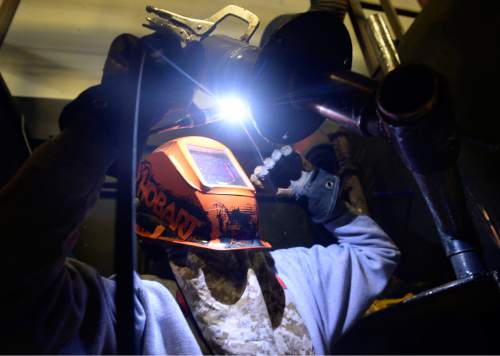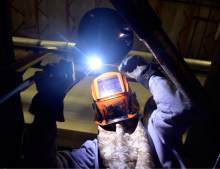This is an archived article that was published on sltrib.com in 2015, and information in the article may be outdated. It is provided only for personal research purposes and may not be reprinted.
Utah's network of technical colleges has inflated its graduation rates by over 40 percent in an effort to meet the governor's goal of a more educated workforce, finds a new legislative report.
The Utah College of Applied Technology has "diluted" its graduation data since 2013, counting eight-hour courses and 60-hour job trainings as certificate programs and even revising prior reports to adjust achievement rates, according to the report.
Administrators apparently were aiming to advance the state toward its goal of two in three adults having some kind of post-high-school degree or certificate by 2020, audit supervisor Tim Bereece told the Legislative Audit Subcommittee on Tuesday.
"The whole effort of '66 by 2020' ... it seems we're reaching it by a shell game," said Senate President Wayne Niederhauser, a Sandy Republican.
UCAT, which offers programs in fields from nursing to crane operation, now counts course completion along with program certification, which led to a 43 percent increase in certificates from 2011 to 2014, according to the audit.
Before 2013, a cosmetologist who took a brief course in order to brush up on hairdressing skills would not qualify as a certificate-holder. Now that student is counted as a certificate-holder and receives a diploma.
And in UCAT's welding program, students now can earn individual certificates as well as the overall certificate. For example, the audit noted, one student in 2013-2014 earned seven welding certificates, for the main program as well as for six different welding processes.
Rob Brems, UCAT president, said the change acknowledges student work that is meaningful, even if it is incremental.
"We are making progress" at the eight UCAT campuses, from Logan to St. George, he told the panel at the Utah Capitol, "and people are better prepared."
Sen. Gene Davis was skeptical, noting that all certificates are counted the same, despite discrepancies in earnings and job security. "What kind of certificates are we really talking about here?" asked the Salt Lake City Democrat.
Davis and his colleagues referred the report to an education committee for further review.
The governor's initiative for more Utahns to have some kind of degree — from plumbing to philosophy to bioengineering — was not the only factor in the reporting shift, Brems said. As the economy improves, he said, students seek shorter-term programs that don't pry them away from full-time work for too long.
Job trainings average about 60 hours, compared to the 446 hours for most certificate programs, according to the audit.
The team of state auditors also took issue with UCAT's job-placement reporting. The school, their report says, counts further schooling as "successful placement" and relies on surveys submitted to instructors, rather than state data.
Brems defended the method in a letter to the auditor's office. Using one certificate as a stepping stone toward a further one, he said, is "an important and valid placement outcome."
It's not the Legislature's first criticism of UCAT, which received $5.5 million in public funding this year. In 2013, an audit found that student fees and related costs were higher than state-levied tuition costs.
Lawmakers hoped the analysis would help them compare UCAT programs with technical education at Utah's eight public colleges and universities, but the data are compiled too differently to compare, the report found.
Auditors did note that the Utah System of Higher Education also is failing to accurately capture the success of its technical graduates because it does not track whether students' jobs are related to their schooling, or whether they had the job before graduating.
David Buhler, USHE commissioner, responded that job placements are difficult to track. His office, Buhler wrote, is "using the most accurate and complete data currently available by matching actual graduates to actual employment records."
Twitter: @anniebknox







